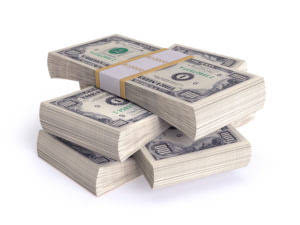Content

Sage makes no representations or warranties of any kind, express or implied, about the completeness or accuracy of this article and related content. Amortization – the allocation of the cost of an intangible asset over a period of time. The fixed is relatively easy to record and audit since it does not change for a period of time. Fixed costs can be used to calculate the breakeven point for a project or a business. The break-even point is the number of units you need to sell to make your business profitable.
That said, fixed costs is a concept used in short-term cost accounting, a method of accounting in which all costs are classified and recorded in the books. Fixed costs include any number of expenses, including rental lease payments, salaries, insurance, property taxes, interest expenses, depreciation, and potentially some utilities. Variable costs, on the other hand, fluctuate in direct proportion to changes in output. In a production facility, labor and material costs are usually variable costs that increase as the volume of production increases. It takes more labor and material to produce more output, so the cost of labor and material varies in direct proportion to the volume of output.
How To Determine Fixed Cost
I would recommend giving SIB an opportunity to improve your bottom line as they have for us. They were able to standardize service and negotiate lower rates across a variety of categories, like waste removal, telecom, security systems, and maintenance contracts. SIB even secured significant funds as a result of two class action settlements that spanned our portfolio. The amount of savings found in just a couple months has exceeded our expectations and we have been very pleased with the responsiveness of everyone involved on your end.
The way a specific cost reacts to changes in activity levels is called cost behavior. Costs may stay the same or may change proportionately in response to a change in activity. When we were approached by SIB, we figured they were another company that would not be able to produce results. We were shocked when their savings report showed a 32% reduction in our telecom costs. In this environment, where every penny counts, the time it took my staff to collect the documents needed for SIB, produced thousands of dollars in profits through reduced costs. Due to [SIB’s] review, we are now realizing double-digit savings in several fixed cost categories, including a more than 40% reduction in our waste removal costs alone.
Because they were able to do such good work for us, we are confident they could provide similar benefits to other franchisees. SIB worked diligently to find savings, and discovered that we were paying above-market rates for our document storage services… After issuing detailed Fixed Cost recommendations and renegotiating our pricing to be more competitive, these steps led to a nice overall decrease in our monthly bills, as well as our future outlays. We sent SIB our recent bills and they quickly got to work analyzing our vendors, services, pricing, and plans…
Direct Fixed Costs Definition
This is known as economies of scale and is investigated further in context to its relationship with the theory of natural monopoly. Calculating your company’s average fixed cost tells you your fixed cost per unit, which gives you a sense of how much it costs to produce your product or service before factoring in variable costs. To find your company’s fixed costs, review your budget or income statement. Look for expenses that don’t change, regardless of your business’ quantity of output. Any costs that would remain constant, even if have zero business activity, are fixed costs. Fixed costs, sometimes referred to as overhead costs, are expenses that don’t change from month to month, regardless of the business’ sales or production volume. In other words, they are set expenses the company must pay, at least in the short term.
There are two types of costs that businesses endure, variable and fixed. In this article, we’ll teach you everything about fixed cost, including how to determine it. Variable costs are the costs that change in total each time an additional unit is produced or sold. With a variable cost, the per unit cost stays the same, but the more units produced or sold, the higher the total cost. If it takes one yard of fabric at a cost of $5 per yard to make one chair, the total materials cost for one chair is $5.

Industrial consumers may be able to reduce their production occasionally. In this chapter we propose an electricity market design called Capacity Subscription, which provides an economically efficient, transparent, and stable reward for consumer flexibility. Fixed costs can create economies of scale where the per-unit price of production drops over time, as production of units increases, resulting in greater profitability.
Fixed Cost Vs Variable Cost Comparative Table
Accounting for these costs falls under the umbrella of managerial accounting, or the accounting that your leadership uses to track how the business is doing and make decisions. Both of these costs live on the income statement but aren’t broken down, making it difficult to estimate how much it actually costs to run your business. Fixed costs are those expenses that remain relatively constant throughout your business activity. This would mean you don’t have to worry about these costs increasing whether your business is selling more than normal—or less. Capacity Subscription provides a market in which all instruments that contribute to system adequacy, from industrial facilities to consumer flexibility, are valued on par.
For example, building rent is a fixed cost that management negotiates with the landlord based on how much square footage the business needs for its operations. If management decides to rent 10,000 square feet manufacturing plant at $50 a square foot, the rent will be $50,000 a month regardless of how many units the factory actually produces. If your monthly fixed costs are $5,000 and you’re able to do 1,000 oil changes, then your average fixed cost per unit is $5 per oil change. If you’re able to increase oil changes up to 2,000, your average fixed cost per unit will be cut in half to $2.50. Fixed costs can include recurring expenditures like your monthly rent, utility bills, and employee salaries.
- If Pucci’s slows down production to produce fewer collars each month, it’s average fixed costs will go up.
- She has consulted with many small businesses in all areas of finance.
- You can also use this information to calculate future fixed costs which is important for financial projections.
- By definition, there are no fixed costs in the long run, because the long run is a sufficient period of time for all short-run fixed inputs to become variable.
- For example, if the number of units required to become profitable is very high, you can look into ways to increase sales, reduce your variable costs per unit, or find ways to cut down on fixed costs.
These bills cannot easily be changed and are usually paid on a regular basis, such as weekly, monthly, quarterly or from year to year. If you’re like most people, your budget is comprised of both fixed and variable expenses.
Are Fixed Costs Treated As Sunk Costs?
So far, we’ve identified a handful of fixed cost examples since considering the costs we already pay as individuals. A home mortgage is to a lease on warehouse space, as a car payment is to a lease on a forklift. For instance, a fixed cost isn’t sunk if a piece of machinery that a company purchases can be sold to someone else for the original purchase price.
- Fixed cost remains constant at gross level regardless of the volume of production.
- Amortized costs are paid off at the end of the asset’s useful life.
- Meanwhile, fixed costs must still be paid even if production slows down significantly.
- Learn financial statement modeling, DCF, M&A, LBO, Comps and Excel shortcuts.
To balance the capacity, multiple balers and handling lines must be established. Alternatively, it may well be that the market for the material that is identified is limited and therefore only a fraction needs to be baled and shipped to service that market.
Place In Profit Planning
This is the method of charging an expense of a non-tangible asset, gradually, throughout the life of an asset. Amortized costs are paid off at the end of the asset’s useful life. Finally, capital expenses are always fixed because they are single occurrences with no chance of fluctuation. Depreciation ChargeDepreciation is a systematic allocation method used to account for the costs of any physical or tangible asset throughout its useful life. Its value indicates how much of an asset’s worth has been utilized. Depreciation enables companies to generate revenue from their assets while only charging a fraction of the cost of the asset in use each year.

Approved costs means, for any Property, the sum of the acquisition, construction, and other capitalized costs of such Property , whether in the form of cash, property, liabilities assumed, or other consideration. A business can also have discretionary expenses such as gifts, vacations, and entertainment costs. These are desirable, but you can choose whether to have them or not. Since fixed expenses typically represent the biggest chunk of your budget, the money you save in this category can be quite substantial. Break-even analysis allows you to make many decisions like how to price your products, whether to look for lower-cost ways to produce them, or whether new product ideas are worth introducing. In other words, the assets required are specific to the production of the output and, as such, not easily sold once production of the particular product ceases. Plant operating safety is a non-negotiable prerequisite for a profitable nuclear power plant.
Fixed Cost Vs Variable Cost
Both types of expenses are important drivers of a company’s income and profitability. Management often uses fixed costs to base budgets and production schedules on. Since a business can’t get rid of its set costs, a certain amount of products need to be created and sold during each period to cover the expenses.
After going through a review with SIB, it has been extremely beneficial to have an outside team double-check the work we do internally as well as the deals we have set up as a Yum franchisee. It was also nice to use their expertise to gain savings on some of our telecom services that we could not get on our own. They have gotten us tens of thousands of dollars just in credits and refunds for billing errors and negotiated new, reduced pricing in addition so that we will enjoy savings https://www.bookstime.com/ going forward. SIB displayed thorough expertise and their team was very familiar with the day-to-day operations and challenges faced by a business like ours. They seem to have a knack for focusing on the smallest details and turning them into significant, continued savings. One area where SIB has been very helpful is our wireless telecom costs. SIB was able to get our cellular provider to stop charing us for services we weren’t using, and they put us on a more cost-effective plan.
3 4 Cost Effectiveness
Think of them as what you’re required to pay, even if you sell zero products or services. The fixed cost per unit is the total fixed costs of a company divided by the total number of units produced.
Keeping Track Of Small Business Financial Transactions
In recent years, fixed costs gradually exceed variable costs for many companies. Firstly, automatic production increases the cost of investment equipment, including the depreciation and maintenance of old equipment. It is difficult to adjust human resources according to the actual work needs in short term. The term fixed cost refers to a cost that does not change with an increase or decrease in the number of goods or services produced or sold.
Company
The total cost for 10 chairs is $50 (10 chairs × $5 per chair) and the total cost for 100 chairs is $500 (100 chairs × $5 per chair). So for every dog collar Pucci’s Pet Products produces, $1.47 goes to cover fixed costs. If Pucci’s slows down production to produce fewer collars each month, it’s average fixed costs will go up. If Pucci’s can increase production without affecting fixed costs, its average fixed cost per unit will go down. Utilities– the cost of electricity, gas, phones, trash and sewer services, etc.
